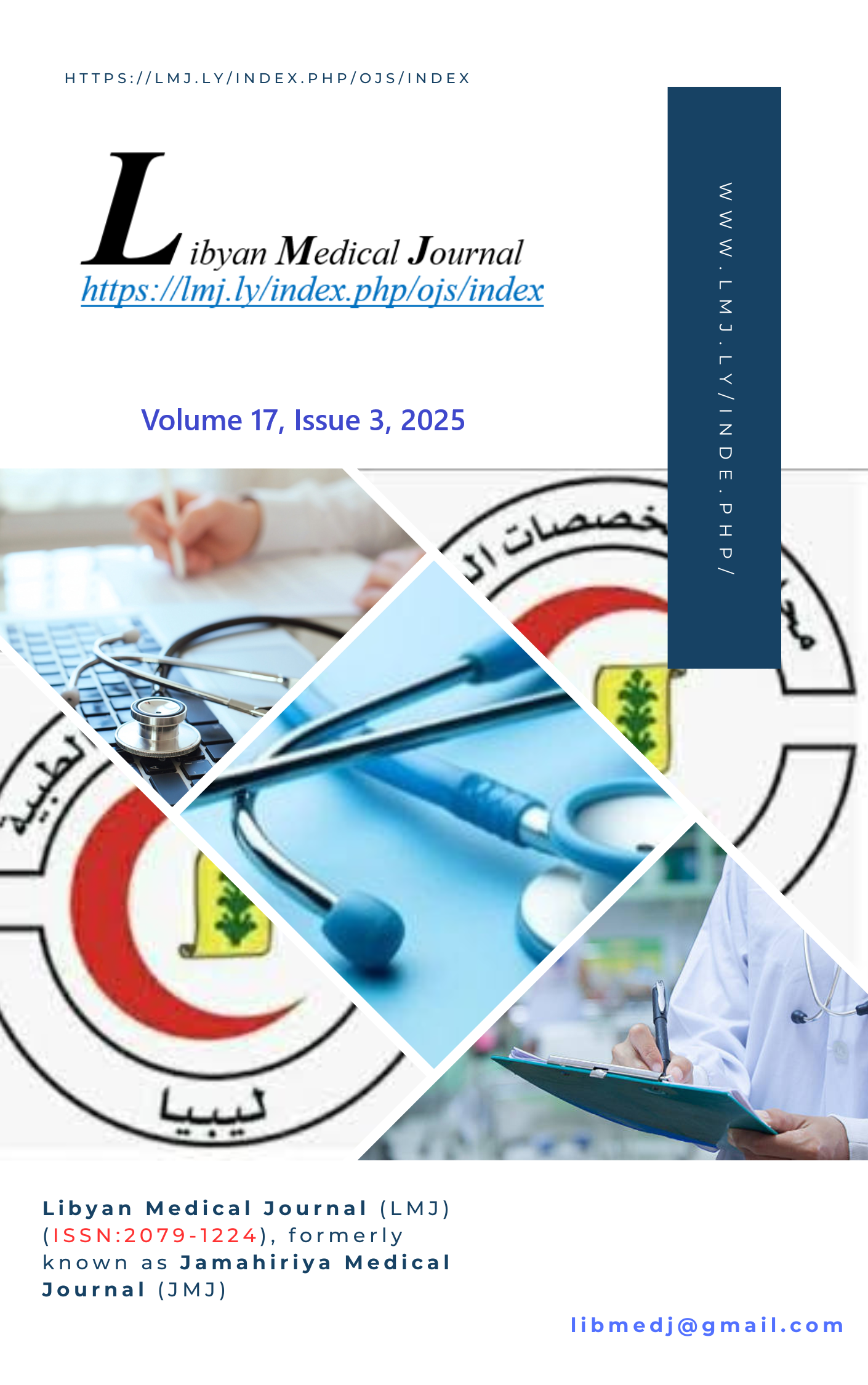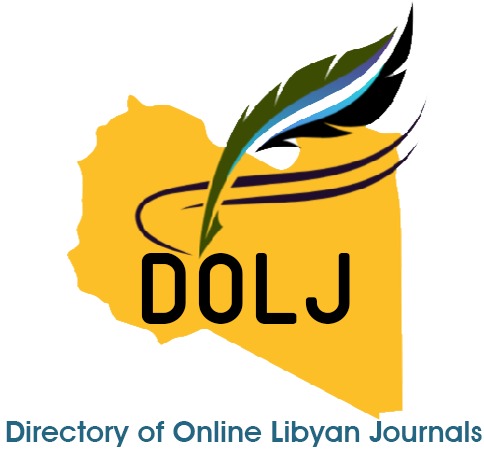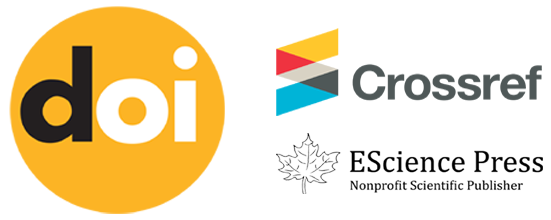Comparisons Between Tight and Conventional Glycemic Control in Traumatic Brain Injuries
DOI:
https://doi.org/10.69667/lmj.2517319Keywords:
Conventional Glycemic Control, Traumatic Brain Injuries, Libya.Abstract
Stress-induced hyperglycemia is a common and harmful side effect of severe traumatic brain injury (TBI) is stress-induced hyperglycemia which is linked to increased subsequent damage and a poor prognosis. Although intensive insulin therapy (IIT) attempts to address this, its advantages are outweighed by the high risk of hypoglycemia and inconsistent mortality benefit, which makes its ideal use in neurocritical care debatable. The purpose of this study was to compare the safety and effectiveness of an intensive insulin regimen (targeting 80–120 mg/dL) to standard care (<220 mg/dL) in patients with severe traumatic brain injury. Two surgical intensive care units in Libya participated in a prospective, randomized, double-blind. The study included 80 persons with severe TBI (GCS ≤8), 20 of whom received conventional therapy and 60 of whom received IIT. The rate of hypoglycemia (blood glucose <80 mg/dL) was the main outcome. Infection rates, length of stay in the intensive care unit, neurological sequelae, and mortality were secondary outcomes. When compared to standard treatment, intensive insulin therapy dramatically improved neurological outcomes, decreased infection rates, and shortened the length of stay in the intensive care unit. But it was also linked to a noticeably increased risk of hypoglycemia episodes. Importantly, there was no difference in mortality between the two therapy groups that was statistically significant. Although intensive insulin therapy improves neurological recovery and offers substantial clinical advantages for patients with severe TBI, it comes at the expense of a higher risk of hypoglycemia and has no mortality benefit. These results highlight the need for cutting-edge glucose monitoring tools to properly apply strict glycemic control in this susceptible group
References
Lam AM, Winn HR, Cullen BF, Sundling N. Hyperglycemia and neurological outcome in patients with head injury. J Neurosurg. 1991 Oct;75(4):545–51. doi:10.3171/jns.1991.75.4.0545.
Zygun DA, et al. Hyperglycemia and brain tissue pH after traumatic brain injury. Neurosurgery. 2004 Oct;55(4):877–81; discussion 882. doi:10.1227/01.neu.0000137658.14906.e4.
Van den Berghe G, et al. Intensive insulin therapy in the medical ICU. N Engl J Med. 2006 Feb;354(5):449–61. doi:10.1056/NEJMoa052521.
Egi M, Bellomo R, Stachowski E, French CJ, Hart G. Variability of blood glucose concentration and short-term mortality in critically ill patients. Anesthesiology. 2006 Aug;105(2):244–52. doi:10.1097/00000542-200608000-00006.
Krinsley JS, Grover A. Severe hypoglycemia in critically ill patients: risk factors and outcomes. Crit Care Med. 2007 Oct;35(10):2262–7. doi:10.1097/01.CCM.0000282073.98414.4B.
Lacherade JC, Jacqueminet S, Preiser JC. An overview of hypoglycemia in the critically ill. J Diabetes Sci Technol. 2009 Nov;3(6):1242–9. doi:10.1177/193229680900300603.
Kansagara D, et al. Risk prediction models for hospital readmission: a systematic review. JAMA. 2011 Oct;306(15):1688–98. doi:10.1001/jama.2011.1515.
Wiener RS, Wiener DC, Larson RJ. Benefits and risks of tight glucose control in critically ill adults: a meta-analysis. JAMA. 2008 Aug;300(8):933–44. doi:10.1001/jama.300.8.933.
Bilotta F, Spinelli A, Giovannini F, Doronzio A, Delfini R, Rosa G. The effect of intensive insulin therapy on infection rate, vasospasm, neurologic outcome, and mortality in neurointensive care unit after intracranial aneurysm clipping in patients with acute subarachnoid hemorrhage: a randomized prospective pilot trial. J Neurosurg Anesthesiol. 2007 Jul;19(3):156–60. doi:10.1097/ANA.0b013e3180338e69.
Gandhi GY, et al. Intensive intraoperative insulin therapy versus conventional glucose management during cardiac surgery: a randomized trial. Ann Intern Med. 2007 Feb;146(4):233–43. doi:10.7326/0003-4819-146-4-200702200-00002.
Sperry JL, et al. Early hyperglycemia predicts multiple organ failure and mortality but not infection. J Trauma. 2007 Sep;63(3):487–93; discussion 493–4. doi:10.1097/TA.0b013e31812e51fc.
Scalea TM, Bochicchio GV, Bochicchio KM, Johnson SB, Joshi M, Pyle A. Tight glycemic control in critically injured trauma patients. Ann Surg. 2007 Oct;246(4):605–10; discussion 610–2. doi:10.1097/SLA.0b013e318155a789.
Meyfroidt G, Keenan DM, Wang X, Wouters PJ, Veldhuis JD, Van den Berghe G. Dynamic characteristics of blood glucose time series during the course of critical illness: effects of intensive insulin therapy and relative association with mortality. Crit Care Med. 2010 Apr;38(4):1021–9. doi:10.1097/CCM.0b013e3181cf710e.











